Pioneer suffragists and suffragettes in St John's Wood
The suffragists of 1866
Women’s suffrage societies – groups who campaigned for the right to vote – began to emerge in Britain in the mid-19th century. Those who believed in peaceful, constitutional campaign methods are known as suffragists. (The more militant ones at the start of the twentieth century are known as suffragettes.) Some of the earliest ones who organised a petition in 1866 lived in the St Johns Wood area.
The Kensington Society (1865 -68)
was a discussion group for women which organised the first campaign for female suffrage. Its membership of 38 at the beginning included teachers, writers and others, mainly middle class women, who were interested in the education and advancement of their sex, and whose male relatives were likely to be successful business men, lawyers or educators. Seventeen of them were under 30, of whom two were married and three married later , and seventeen were in their 30s, of whom three were married and one married later. Four were in in full time or part time jobs . The numbers rose to 67 in 1868 and the fee was 2s 6d annually and 2s 6d at each meeting. Each member submitted a discussion question before the meeting and three of greatest interest were chosen and discussed. There was a wide range of subjects such as should boys and girls study the same subjects or could women aspire to be magistrates .
When the 1851 census had been analysed it had become apparent there would be a large number of surplus middle class women in future who would need to be educated to earn a living. Fathers were starting to look for schools which could provide education rather than relying on ill taught governesses. Also those women who were born between 1825 and 1835 had lived through a period when women’s concerns had been in the news – for example in 1840 had come the exclusion of women from the Antislavery Convention, then the opening of Queens College and Bedford College for women and in 1856 the petition for the Married Women’s Property Act. It is notable that many of the suffragists had a family background of campaigning for other peoples rights, such as anti-slavery and the Corn Laws.
The 1866 petition
The Kensington group organised a petition that demanded that women should have the same political rights as men. The women were not asking for universal suffrage but for all householders, regardless of sex, to have the right to vote. The petition was printed and sent out across Britain, and in less than a month, 1,499 signatures had been collected; many were related to or friends of other signatories . Women pasted their signatures and their addresses onto a long scroll which was then presented to Parliament by John Stuart Mill and Henry Fawcett , (M.P.s and supporters of female suffrage, ) on 7 June 1866. Mill drafted an amendment to the Second Reform Bill that would give women the same political rights as men and presented it to parliament in 1867. The amendment was defeated, however, by 196 votes to 73. In the wake of this defeat the London Society for Women’s Suffrage was formed and similar women’s suffrage groups were founded all over Britain. In 1897, 17 of these individual groups joined together to form the National Union of Women’s Suffrage Societies (NUWSS),
The Quakers
More than 40 signatories were Quakers , 4 of whom were related to John Bright (1811-1889) who was a Quaker, a Liberal statesman, and one of the greatest orators of his generation who coined the phrase “the mother of Parliaments”. He sat in the House of Commons from 1843 – 1889 promoting free trade, electoral reform and religious freedom. His sisters Priscilla and Margaret and his sister-in-law Ursula as well as his niece Katherine (2 of whom were connected with St Johns Wood) were signatories .
Suffragists from the St Johns Wood area who signed the petition
Emily Davies (1830 – 1921) 17 Cunningham Place
Having moved to London in 1862, Emily was Hon Sec of the Kensington Society and played a key role in the 1866 petition, helping to arrange its printing and delivery, and was one of the women who handed it over at the House of Commons. The greatest passion of Emily’s life was her commitment to improving womens’ and girls’ education and in 1866 she had also published her influential paper ‘The Higher Education of Women’, which promoted the idea of a residential college that would educate women to university level; this would become Girton College, Cambridge, in 1869. It ensured that female students could study the same curriculum as male university students at Cambridge, so that their achievements would be recognised as equal. She had little formal education but wrote an article for English Women’s Journal about women physicians. She was non confrontational and would pack the front rows at meetings with demure pretty women. There is now a Blue Plaque on her house.
Margaret Lucas nee Bright (1818 -90) 10 Carlton Hill East
A Quaker, her brother was Liberal MP John Bright (who didn’t support women’s suffrage originally) and her sisters and sister in law and daughter were active in the cause. She was married to slavery abolitionist Samuel Lucas and was involved all her life in the Temperance Movement. Another brother, Jacob (1821-99) was also a supporter and married Ursula Mellor, a campaigner for womens rights.
Katherine Lucas (1842 – 1932) 10 Carlton Hill East
The daughter of Margaret Lucas, she signed the petition with her mother and three years later married master cotton spinner John Pennington Thomasson of Bolton, (the Quaker son of Anti Corn Law industrialise Thomas Thomasson) and moved to the North.
Her future connections with suffrage
In 1870 she subscribed to the Manchester NSWS and in 1872, was elected to its executive committee. She also donated to the Central Committee of the NSWS (CCNSWS), but when it split in 1888, like most of the Bright family, left to join the Central National Society for Women’s Suffrage (CNSWS). She was on its executive committee from 1889, and in 1901, was also on the executive committee of the North of England Society for Women’s Suffrage (NESWS). in 1905, she helped set up the National Industrial and Professional Women’s Suffrage Society (NIPWSS) and sat on its executive committee. By 1913, Katherine had joined the NUWSS, was vice president of the London Society for Women’s Suffrage and donated to the New Constitutional Society for Women’s Suffrage (NCSWS). Katherine had many campaigning interests, including anti-slavery and the Repeal of the Contagious Diseases Acts, attending international conferences on both, and she supported advances for working class women.
Anna Pennington ( – 1925) 8 Upper Eamont Terrace
In the 1861 census she was living with her three children at 52 Loudoun Rd where her husband taught music . Her surname has Quaker connections. She died 1925 leaving £3600.
Her future connections with suffrage
She was on the Married Womens’ Property Committee 1869 -72 and the London Committee in 1870. In 1878 she became a governor of the London School of Medicine for Women. This had been established in 1874 by pioneering women physicians like Elizabeth Garrett Anderson as the first medical school to train women as doctors and promoted their future employment in the fields of midwifery and other fields of treatment for women and children. and had been supported by another St Johns Wood resident, Thomas Henry Huxley. (Huxley had written earlier – We find girls timid, prone to dependence, born conservatives, and we teach them that independence is unladylike, that blind faith is the right frame of mind, and that whatever we maybe permitted, and indeed encouraged, to do for our brother, our sister is to be left to the tyranny of authority and tradition. With few insignificant exceptions, girls have been educated either to be drudges, or toys, beneath man or a sort of angels above him. The possibility that the ideal of womanhood lies neither in the fair saint nor in the fair sinner, that the female type of character is neither better nor worse than the male; that women are meant neither to be men’s guides nor their playthings, but their comrades, their fellows and their equals, so far as nature puts no bar to that equality, does not seem to have entered into the minds of those who have had the conduct of the education of girls. ) In 1877 an agreement was reached with the Royal Free Hospital that allowed students at the London School of Medicine for Women to complete their clinical studies there. The Royal Free Hospital was the first teaching hospital in London to admit women for training.
Virginia S Drewry -nee Buckingham ( 1808 – ) 15 King Henry’s Road
She was married to Henry Runciman Drury, chief clerk at the War office. In 1861 they had been living in the Finchley Road but in 1871 lived in King Henry’s Road with their children, a cook, three maids and a ladies maid.
Louisa Drewry (1835 – ) 15 King Henry’s Road
Ellen Drewry ( 1834 – ) 15 King Henry’s Road
Her future connection with suffrage
She was on the General committee for the medical education of women and in the 1871 census she was a Professor of History and English Literature
Catherine Swayne Drewry (1845 -1927 ) 27 King Henry’s Road,
When she died in 1927 she was a widow living in Windmill Hill Hampstead and left £6317
Sophia E De Morgan nee Frend (1809 – 1892) 91 Adelaide Road
Sophia’s father, mathematician William Frend , took her everywhere with him when she was a child and she was instructed in Hebrew and philosophy and viewed chemical experiments. In 1828 she began tutoring Ada Lovelace, Byron’s daughter , as Lady Byron took advice on her education from Frend. In June 1833 Ada visited Charles Babbage and saw his difference engine, and Sophia reported that she had understood the principle of the machine. By 1835 because of Lady Byron she was on the Committee of the Children’s Friend Society, and was drawn into prison and workhouse reform by her friendship with Elizabeth Fry. She married Augustus de Morgan in 1837 – he was a friend of her father and had met her 10 years earlier – and was a mathematician who defined and introduce d the term mathematical induction. Because of his strong views, De Morgan did not want a Church wedding with the usual marriage ceremony so they were married in a Registry Office by the Rev Thomas Madge and the form of service omitted the ‘duties of husbands and wives’ part of the wedding service. They had seven children and their daughter Mary said her father did not entirely share her mother’s views on political emancipation for women but she succeeded in getting him to give course of lectures for Bedford College and later he joined the women’s suffrage movement.
Frances Mary Buss (1827 – 1894 ) 87 King Henry’s Road
Having attended lectures at Queens College, she founded the North London Collegiate School for Girls in 1850, which had 200 pupils by the time of the petition, and fought all her life for the improvement of girls’ education and their admission to University.
Mrs Charles ( Eliza) Orme (1816-92) 81 Avenue Road
She was the daughter of non-conformist minister Rev. Edward Andrews and married Charles Orme, spirit merchant son of a wealthy brewer. She had seven children including two daughters Eliza and Rosaline who were active supporters, Rosaline signing the petition under her married name of Masson .
Eliza Orme (1848 – 1937)
She joined the Enfranchisement of Women Committee after signing . In 1879 she applied to the Law Society to take their exams, but her application was refused. However she was the first woman to take a law degree in 1888 when University College began to accept women undergraduates.
Rosaline Masson
Florence J Waterlow ~(1848- ) 25 Park Crescent
She was the daughter of Alfred Waterlow, a rich City business man and was at boarding school 1861 at 10 Princes Square Paddington in the 1861 census aged 13 . There were two sisters running the school, with three servants and 11 students . She marrried John Hill in 1870 and died in Maresfield Gardens in 1900 leaving £2161 .
Maria Davies : St John’s Wood,
Jane Thornton Daniels 183 – 1914 95 Fellows Road
Her father was a woollen factor and she was a spinster living on private means – she left £6619 when she died in 1914.
Ellen Elliot 49 Springfield Road
She was the head teacher of a ladies school with 11 boarding pupils
E A Wilkinson 4 Finchley Road
S S Wilson 57 Finchley Road
Mrs Thos. Fleming 1 Belsize Park Road
Mrs Bayle Bernard 56 Clarendon Terrace, Belsize Road
Miss B Bernard 56 Clarendon Terrace Belsize Road
Suffragette supporters
Ethel Wright ~(1866 – 1939)
was living at No 9 Elm Tree Road in 1891. Frustration with the limitations imposed on women’s artistic output and ambition may have led Wright to the suffrage movement. She specialised in portraits, most famously for that of Christabel Pankhurst in 1908 , showing Christabel in the throes of oratory; she is wearing the purple, green and white sash of the Women’s Social and Political Union, the organisation founded by Emmeline Pankhurst in 1903. Her portrait of Christabel was exhibited at a large exhibition organised by Pankhurst’s WSPU in 1909, and embodies the ‘awakened spirit’ of women that was identified in the catalogue for that exhibition. Wright also painted Una Duval in the Music Room ; Una became famous when she said she did not want to promise to obey her husband during the marriage ceremony. She had to conform to have a legal marriage but wrote a pamphlet To love honour but not obey. Wright continued her association with the suffrage movement whilst continuing to exhibit annually at the Royal Academy until 1927.
Edith Ayrton (1879 – 1943)
was the daughter of physicist William Ayrton and Matilda, who was a doctor and member of the London National Society for Women’s Suffrage; she died when Edith was four years old; two years later Edith’s father married Hertha Marks, a scientist who worked from a laboratory at home and was a member of the National Union of Women’s Suffrage societies. Phoebe Sarah Hertha Ayrton ( 1854 – 1923) was a British engineer, mathematician, physicist and inventor, and suffragette. She was awarded the Hughes Medal by the Royal Society for her work on electric arc and ripple marks in sand and water. She realised Edith was a future author and sent Israel Zangwill – one of the most famous Jewish writers of the time copies of some short stories written by Edith, which resulted in him writing every day to Edith. This led to their marriage in 1903, when they lived in Elm Tree Road in St Johns Wood. Edith published a novel, Barbarous Babe in 1904 and then the First Mrs Molivar in 1905. She also joined the Suffrage Societies and by 1907 she and Hertha realised there was there was no hope in achieving the vote without a more militant approach and so they joined the Women’s Social and Political Union.
Israel Zangwill (1864-1926)
On 9 February 1907 Zangwill shared a platform on the subject of women’s suffrage with Keir Hardie, and Sylvia Pankhurst recorded when Mr Zangwill came to speak, he declared himself to be a supporter of the militant tactics and the anti-Government policy. To the charge that the members of the Union were unwomanly he replied that ladylike means are all very well if you are dealing with gentlemen but you are dealing with politicians. For every government – Liberal or Conservative – that refuses to grant female suffrage is ipso facto the enemy. With some other left wing intellectuals he and 32 other men formed the men’s League for Women’s Suffrage to obtain for women the vote on the same terms as hose granted to men. In 1912 Israel and Edith helped form the Jewish League for Woman Suffrage. By November 1913 however Israel rejected militancy for its own sake as dramatic but not politically effective and especially disapproved of the arson campaign. In February 1914 he helped establish the non militant United Suffragists.
In 1924 Edith Ayrton published a novel, the Call , about a woman scientist, modelled on her stepmother Hertha, who gives up her research to concentrate on Women’s suffrage.

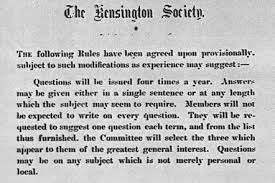
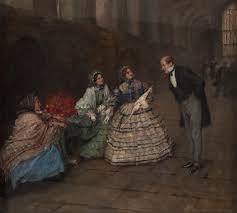
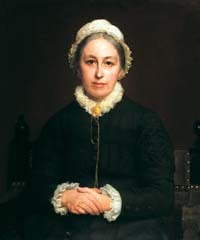
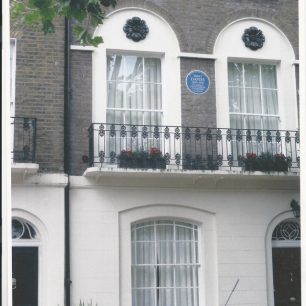






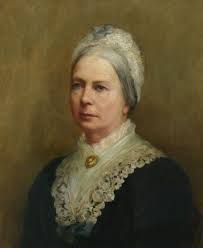




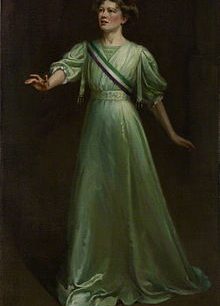
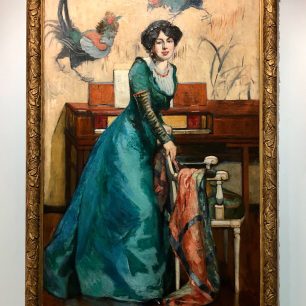






No Comments
Add a comment about this page